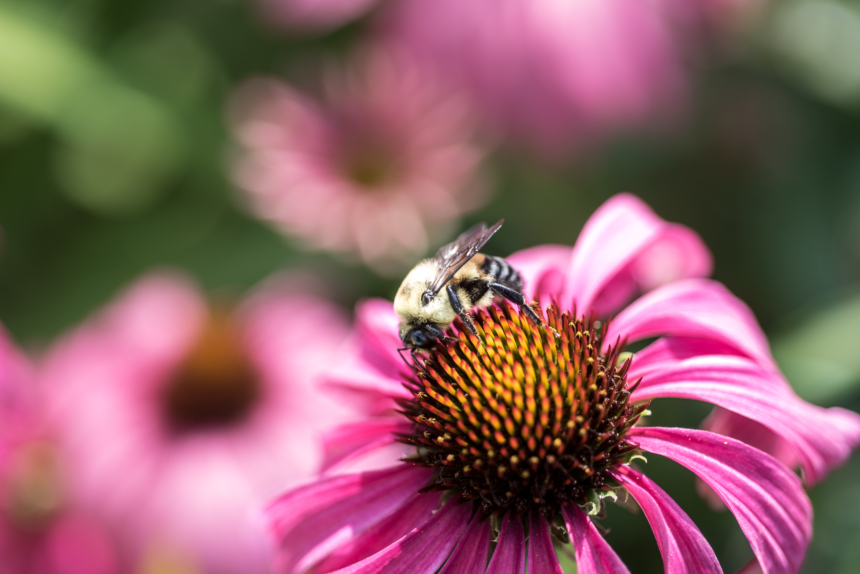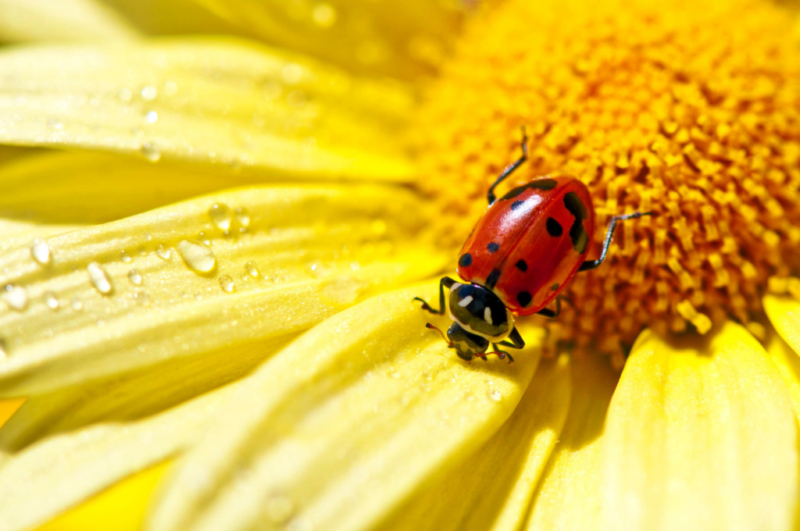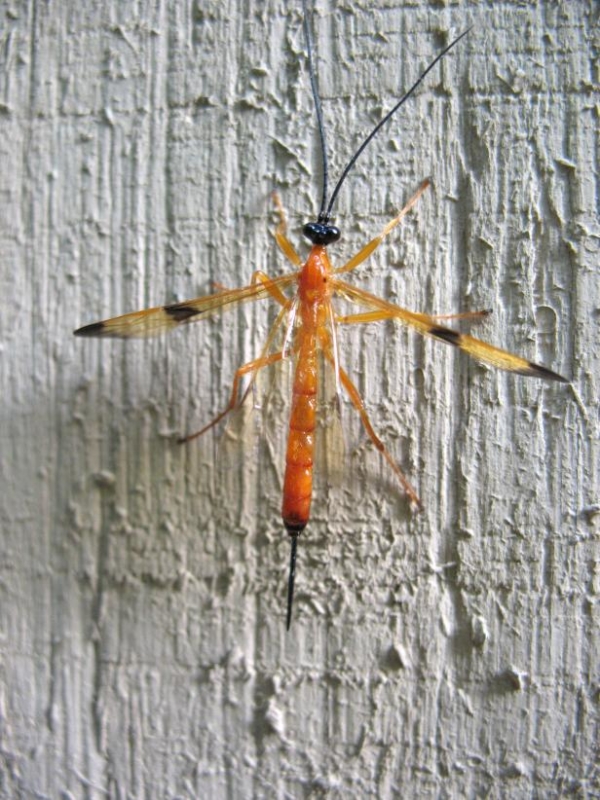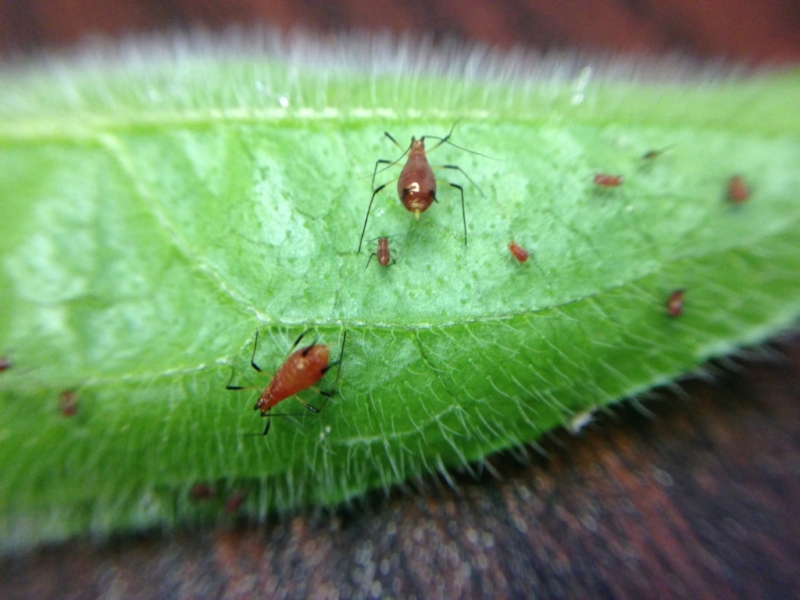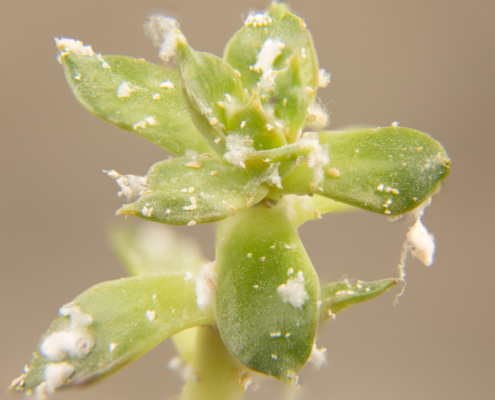Good Bug, Bad Bug
“To smush or not to smush?” I always ask myself whenever I see a six-legged critter in my garden. Some are brightly colored with “warning signs” written all over them. Others are more discrete and can camouflage themselves from the unobservant eye. But which of these bugs are beneficial, and which ones are silently consuming our gardens? When we talk about “bugs” in the garden, the technical definition would limit our conversation to six legged insects that have 3 segmented body parts and sucking mouth pieces such as stink bugs, aphids, and scale. However, if you ask a gardener about bugs, they are likely to include a broader sampling such as snails, spiders, mites, caterpillars, and slugs. Understanding the differences between these critters can ultimately help you to control any problems that may arise should they take up residence in or around your plants.
Beneficial Bugs
In general, an insect benefits gardens by acting as either a predator or a pollinator. Pollinators—the beautiful butterflies and bees that we entice into our gardens with nectar filled blooms—are generally well-known and appreciated. Predators are insects that attack and eliminate garden pests for us. The great thing about predator insects is that you will not need to entice them into your garden. Where pests are, the predators will follow.
Parasitic wasps are perhaps one of the most unique insect predators. These are generally tiny wasps with extremely large “ovipositors”, which they use to lay eggs inside of other insects. They’re often the garden pests we wish to eliminate. When the larvae hatch, they consume the insect. This is definitely unpleasant to think about, but extremely beneficial to our gardens!
Pest Insects
A pest insect is one that appears in large destructive numbers in the garden to eat or otherwise destroy our carefully cultivated plants. The aphid may be one of the most well-known examples. One lonely aphid in the garden is harmless, but once that aphid reproduces and a population is established, damage will occur. The entire population sucks sugar from the leaf tissue of your beloved plants. As aphids excrete the sugar, a byproduct called “sooty mold” is formed on top of the leaf. Often, it is the presence of this sooty mold that a person notices first in the garden, as the aphids normally hide themselves under the leaf. Aphids can come in many different colors and can be in many places in the landscape. Keep an eye out for aphids on new growth in annuals and perennials, however, if they are present on a tree or shrub they generally aren’t significant enough to control with pesticides. Instead, try spraying them with a hose to decrease population numbers. Fortunately for us, aphids have many natural predators, including parasitic wasps and ladybugs.


